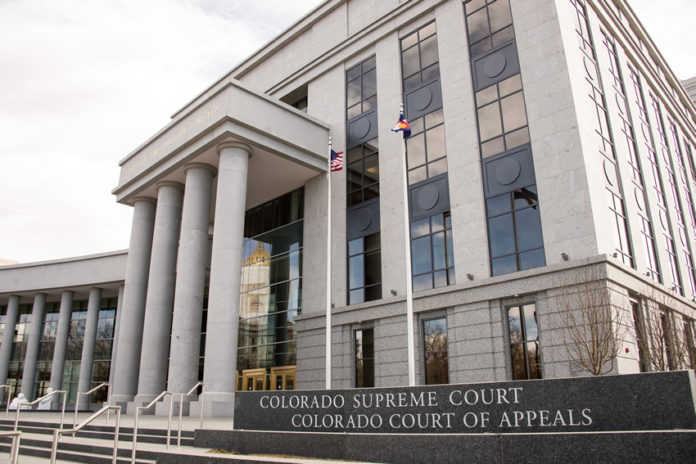
The Colorado Supreme Court on Dec. 14 held that a man found in possession of hundreds of sexually exploitative images of children should only be charged with a single felony count of child pornography possession. The ruling clarifies a statute that has led to varying practices among the state’s prosecutors and that many believe should be updated to account for changes in technology.
A police search of Joshua Bott’s home in 2014 uncovered a memory card containing 294 sexually exploitative images of children showing at least 250 different victims. Bott was charged with multiple counts of sexual abuse of a child, distribution of child pornography and possession of child pornography. But Bott’s attorneys and prosecutors disagree about how many counts of possession he should be charged with.
Colorado’s statute on sexual exploitation of a child makes possession of child pornography a class 5 felony unless a person possesses more than 20 different images or recordings, in which case it is considered a more serious class 4 felony. Each class 4 felony is punishable by up to six years in prison while class 5 felonies are punishable by up to three years in prison.
Prosecutors split Bott’s nearly 300 sexually exploitative images into 12 different “bundles,” each containing more than 20 items, and he was charged with 12 counts of the class 4 felony.
Bott tried to dismiss 11 of the 12 possession charges, arguing that possession of more than 20 items should count as a single offense. The lower court denied the motions to dismiss, and an El Paso County jury convicted Bott of all 12 possession counts.
On appeal, Bott argued the multiple convictions for possession violate his double jeopardy protections because state law treats possession of more than 20 child pornography items as a single offense. The Court of Appeals agreed with Bott, and the Colorado Supreme Court affirmed, concluding that the language of the statute supports Bott’s interpretation.
“Because the legislature has itself determined that the possession of qualifying items numbering greater than twenty, without limitation, amounts to the commission of a single felony,” states the high court’s opinion, “separate convictions and punishment for the simultaneous possession of qualifying items exceeding twenty violates constitutional protections against being punished twice for the same offense.”
“We charged Mr. Bott in accordance with the law, as it then was interpreted, and with our longstanding policy to take every victim of child pornography into account in making our charging decisions,” said Howard Black, director of communications for the 4th Judicial District, where Bott was originally charged. “We will continue to prosecute these important cases, which involve real child victims, to the utmost vigor of the law.”
According to Amanda Gall, director of sexual violence policy and prosecution at the Colorado District Attorneys Council, different jurisdictions have varied in their approach to prosecuting cases involving hundreds or thousands of sexually exploitative images of children. Some have divvied the material into bundles to arrive at multiple class 4 felony counts, as El Paso County prosecutors did in Bott’s case, Gall said, while others have charged by the device, filing one count for a collection on an SD card and another count for images on a hard drive.
“I think a lot of prosecutors would argue that they’re often different children, different conduct, different time periods collected at different times,” Gall said. “In each of those intentional acts, I think there’s a legitimate argument to be made that those are intended to be punished individually.”
“Obviously, post-Bott, that approach is now in question,” she added.
Gall said that while there used to be a “reasonable distinction in conduct” between someone who had a handful of images and someone with hundreds, drawing the line at 20 is “really not a meaningful number” in the age of the internet. Child pornography cases today often involve thousands of images and videos, she said, adding that as a special victims unit prosecutor in Jefferson County, she had a case in which a man had 40,000 pornographic images of infants.
“The internet has really changed the way that this crime is committed,” Gall said. “It’s no longer Polaroids exchanged in parks or VHS tapes. It’s bulk files and zip files and the ability to amass very large collections of things very easily.”
The difficulty of prosecuting cases using laws that lag behind technology has led to a push to modernize Colorado’s laws on sexual exploitation of children. In January, state legislators introduced a bill, HB-1120, that would have eliminated language making possession of more than 20 images a higher class of felony. Instead, the bill would have imposed harsher penalties based on the type of the exploitation, such as for material depicting children under 12 and children subjected to rape, violence or sadomasochism.
The bill would also have clarified that accessing child pornography with intent to view is a crime — an important update since a lot of child pornography is stored in the cloud and viewed via livestreams, making it hard to prosecute because the current law only targets possession, distribution and production.
HB-1120 passed the House unopposed in early March but was later killed in a Senate committee as a casualty of the pandemic legislative session. The CDAC helped draft the bill, and Gall said they expect the bill to be reintroduced during the next legislative session.
Although child pornography, like many other problems, may appear less pressing in the face of COVID, there has been an explosion in online child sexual abuse amid the pandemic, according to Gall. The National Center for Missing & Exploited Children said it received 4.1 million reports of online child sex abuse in April — more than four times the number of reports from the same period in 2019.
—Jessica Folker

